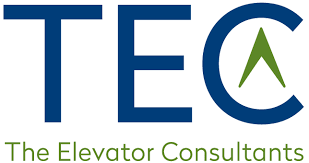Elevators have become an indispensable part of our daily lives if you are going to any building with more than two stories. An elevator is exposed to daily wear and tear of constant use and in some cases misuse. Maintenance issues can arise, potentially compromising the reliability we’ve come to expect not to mention the cost and safety associated.
After years of experience in elevator consulting, there are prevalent elevator maintenance challenges it is helpful to shed light on the importance of addressing them promptly to ensure a smooth and secure vertical journey for all.

1. Doors Issues
One of the most frequent issues encountered in elevator maintenance is door-related issues whether malfunctioning for numerous issues, damaged, or service-related. However, these problems can range from doors not opening or closing properly to misaligned sensors and mechanical faults. Worn-out components, physical damage, or obstructions in the door tracks are common culprits behind these issues
Malfunctioning doors not only cause inconvenience due to elevators being out of service but also pose a significant safety risk. Proper use, cleanliness, and regular maintenance of doors, door operators, rollers, and tracks are crucial to prevent door-related problems.
2. General Mechanical Failures
Elevator systems are complex with numerous moving parts, and mechanical failures are an inevitable part of their lifecycle. Common mechanical issues include motor issues, drives, cables, roller guides, and control system faults.
These failures can result from regular wear and tear, inadequate maintenance, or lack of timely repairs. Neglecting preventative maintenance usually results in mechanical issues which can lead to costly repairs, extended downtime, user displeasure, and potential safety.
3. Unusual Noises
It is very common for an elevator consultant to hear from clients that they are hearing strange noises, like scrapping, grinding, shaking, squeaking, and clunking noises which are often indicators of underlying mechanical issues. These sounds may suggest several different issues from misaligned components, loose parts, the need for lubrication, and several others.
Regular preventative elevator maintenance can help prevent these issues before they even become significant problems, potentially preventing costly repairs and downtime.
4. Slow or Jerky Movements
Elevators may move slowly, bounce, jerk motion, sway, or other movements which can be alarming, scary, and uncomfortable for users. Furthermore, these issues can be caused by many issues from improper lubrication, worn-out components, misaligned pulleys, or problems with the motor or drive system to name a few.
Regular preventative maintenance, including lubrication and component replacements, as well as prompt repairs, are necessary to prevent these problems and ensure a comfortable user experience
5. Stuck or Unresponsive Elevators
Elevators can become stuck or unresponsive elevators can be due to power outages, malfunctioning control systems, mechanical failures, or other issues. Also, these situations can be distressing for passengers and require prompt attention.
Ensuring a reliable power supply, generators, and regular preventative maintenance of the control panel and elevator-related components can help minimize the risk of these issues.
Preventive Maintenance: The Key to Reliable Elevator Operation
Preventive maintenance is the cornerstone of preventing and ensuring the safe, reliable, and efficient operation of elevators. Regular maintenance, timely repairs, and upgrades can significantly reduce the occurrence of common elevator problems.
Working with an experienced elevator service provider who understands the complexities of elevator systems is essential. These experts can provide the proper preventative maintenance and identify potential issues early, recommend appropriate maintenance schedules, and ensure compliance with relevant safety regulations and industry standards.
All building owners and managers can minimize common elevator and escalator issues to avoid downtime, extend the lifespan of their elevator equipment, stop unnecessary costs, and provide a safe and convenient experience for building occupants and visitors.
Elevators are vital components of buildings, but they require diligent maintenance to ensure their continued operation. By ensuring your service provider is conducting preventative maintenance addressing common issues building owners and managers can maintain reliability. And the safety of their elevator systems and increased user experience. In addition, investing in preventive maintenance, making sure the service provider shows up as required. Working with experienced elevator service providers is the key to achieving this goal.

